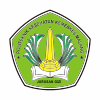Hubungan Tingkat Konsumsi Gizi dan Aktivitas Fisik dengan Kejadian Status Gizi Lebih pada Siswa di SMP Negeri 1 Campurdarat Tulungagung
DOI:
https://doi.org/10.31290/nj.v3i2.4082Keywords:
Diet; Physical activity; Nutritional Status of AdolescentsAbstract
Background: Overnutrition or obesity is a condition where body weight increases due to the accumulation of body fat. One of the causes of nutritional status is a change in excessive eating patterns and lack of physical activity. Food consumption levels refer to the amount of food and drink consumed by individuals, families or communities in a certain time period. Apart from the level of food consumption, the factor that influences nutritional status is physical activity. The definition of physical activity is any body movement that is caused by the work of skeletal muscles and increases energy and energy expenditur. Objective: to determine the relationship between the level of food consumption and physical activity with the incidence of adolescent nutritional status at SMP Negeri 1 Campurdarat. Methods: This research includes quantitative research, a type of analytic survey research with a case control research design, Result: The results of the chi square analysis of the relationship between the level of food consumption and the nutritional status of the respondents had a significance value of 0.009 or <0.05 and the relationship between the level of food consumption and the nutritional status of the respondents had a significance value of 0.003 or <0.05 so that it can be said that there is a relationship. Conclusion: Shows that there is a relationship between excessive eating patterns with more nutritional status in adolescents and less physical activity with the incidence of overweight adolescents.
References
Siswa SMP Al-Azhar Pontianak. Pontianak Nutrition Journal, 1(1), 10–13.
Armadani, D. I. 2017. Hubungan antara Konsumsi Fastfood, Aktivitas Fisik dan Status Gizi (Secara
Genetik) dengan Gizi Lebih (Studi Pada Siswa Kelas VII, VIII, Dan IX Di Mts. Budi Dharma,
Wonokromo, Surabaya). Jurnal Pendidikan Olahraga Dan Kesehatan, 5(3), 766–773.
Cahyaning, R. C. D., Supriyadi, & Kurniawan, A. (2019). Hubungan Pola Konsumsi , Aktivitas Fisik dan
Jumlah Uang Saku dengan Status Gizi pada Siswa SMP Negeri di Kota Malang Tahun 2019. Sport Science and Health, 1(1), 22–27.
Damayanti, E. R. (2022). Hubungan Pola Makan, Aktivitas Fisik, Dan Citra Tubuh Dengan Status Gizi Lebih Pada Remaja Putri Di Sma Negeri 3 Tambun Selatan. Indonesian Journal of Health Development, 4(1), 35-45.
Hardiansyah, & Supariasa, I. D. N. (2017). Ilmu Gizi : Teori & Aplikasi. Jakarta: Penerbit Buku Kedokteran EGC
Kementerian Kesehatan. 2018. Laporan nasional riset kesehatan dasar 2018. Jakarta: Badan Litbangkes Depkes RI; 2018 (diunduh 20 Oktober 2019). Tersedia dari: URL: HYPERLINK http:// www.depkes.go.id
Kementrian Kesehatan RI. (2013). Riset Kesehatan Dasar 2013. Jakarta: Badan Penelitian Dan Pengembangan Kesehatan
Oktaviani, W.D. Hubungan Kebiasaan Konsumsi Fast Food, Aktivitas Fisik, Pola Konsumsi, Karakteristik Remaja, dan Orang Tua dengan Indeks Massa Tubuh (IMT) (Studi Kasus pada Siswa SMA Negeri 9 Semarang Tahun 2018). Tesis. Semarang : FKM-UNDIP. 2018.
Restuasti, T., Jihadi, M., & Ernalia, Y. (2016). Hubungan Pola Makan dan Aktivitas Fisik Terhadap Obesitas Pada Remaja di SMAN 5 Pekanbaru. Kesehatan Masyarakat, 3(I), 1–20.
World Health Organization. Obesity: preventing and managing the global epidemic. Report of WHO Consultation on Obesity in Geneva 3-5 June 1997. 1 Geneva: World Health Organization; 1998










